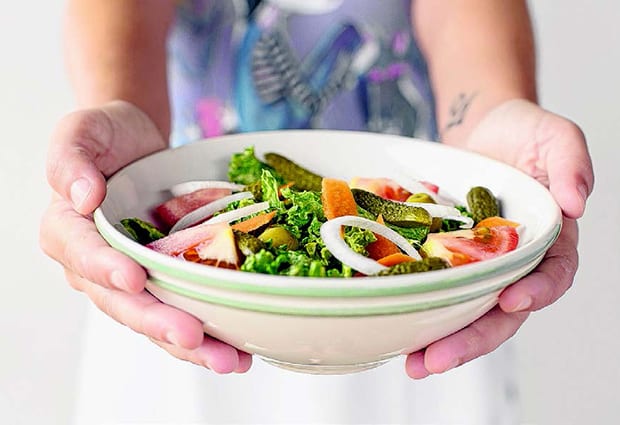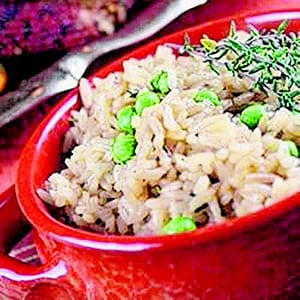
[This piece was written by Jamie Epting, MS, RD, CDN, the system director for clinical nutrition with St. Peter’s Health Partners.]
March is National Nutrition Month, a celebration of the importance of making informed food choices and the professionals on the front of line of educating people on those choices – registered dietitians.
When you want nutrition advice, seek out a registered dietitian. They are professionals credentialed through the Academy of Nutrition and Dietetics, the largest organization of food and nutrition professionals in the United States. There are no regulations on a person calling themselves a “nutritionist,” so there is no way to know what skills and knowledge they bring to the table.
A registered dietitian has at least four years of education including extensive biology and chemistry coursework. Following the completion of that education, dietitians next apply for a very competitive and rigorous internship program, which includes 1,200 hours in different specialties. The final step is gaining accreditation, following a comprehensive exam conducted by the Academy.
Although education is at the core of everything registered dietitians do, in the hospital setting they do much more than teach people how to eat right and make meal plans. Registered dietitians make recommendations to doctors on how to feed patients that can’t take food orally. They look at the big picture of a patient who may have complex medical issues, reviewing their labs and tailoring their care with recommendations for increasing or decreasing certain nutrients.
In a big hospital, each dietitian usually has a specialty. Although registered dietitians are well-rounded in all aspects of nutrition, one may be in expert in critical care while another may be an expert in pediatrics or cardiac care.
 Just as it’s important to have a variety of registered dietitians with different skills and expertise on the team at St. Peter’s, it’s essential to have a wide variety of flavors in your food. That is why this year the theme of National Nutrition Month is “Find your Flavor.”
Just as it’s important to have a variety of registered dietitians with different skills and expertise on the team at St. Peter’s, it’s essential to have a wide variety of flavors in your food. That is why this year the theme of National Nutrition Month is “Find your Flavor.”
The five flavors we think of are bitter, sweet, spicy, sour, and umami. I talked to Chef John Poole at Samaritan Hospital and he suggested thinking outside the box when it comes to combining flavors. He says American food usually follows a single flavor profile, but other cultures are often more adventurous when it comes to mixing flavor.
To mix your flavors, try enhancing something sweet or sour by adding a little salt. When it comes to umami, which can be a little intimidating, chef suggests leaving the salt behind and trying anchovies, bacon, hard cheeses, mushroom or tomato.
Another great way to add flavor to your food is with herbs and spices. I love finding recipes that are made with an herb or spice that I’ve never used before. By trying new recipes you discover new flavors and learn what combinations tend to taste good together. Herbs and spices are also a really good way to add flavor to your food and reduce the amount of salt in your diet.
Check out the recipes below to add some new flavors to your dishes at home! Once you get comfortable with them try getting creative and adding a different pinch of herbs and spices, especially in the rice dish. Happy National Nutrition Month!
Sweet and Sour Sauce
(adapted from lecremedelacrumb.com)
¾ cup sugar
½ cup apple cider vinegar (may substitute white vinegar)
2 tablespoons low-sodium soy sauce
1 teaspoon garlic powder (or try fresh minced garlic)
½ teaspoon onion salt (try onion powder if limiting salt)
¼ cup ketchup
1 tablespoon corn starch
2 tablespoons cold water
Add sugar, vinegar, soy sauce, garlic powder, onion salt, and ketchup to a medium sauce pan. Stir and bring to a boil. In a small bowl whisk together the 1 tablespoon corn starch and cold water until dissolved. Add to sauce pan and stir until thickened, then reduce to low heat.
Easy Herb Rice
(adapted from allrecipes.com)
2 cups water
1 tsp instant beef bouillon granules
2 tsp dried minced onion
½ tsp dried thyme
½ tsp dried marjoram
¼ tsp dried rosemary
1 cup white rice
Mix water, beef bouillon, onion, thyme, marjoram, and rosemary together in a saucepan; bring to a boil. Add rice, reduce heat to medium-low, cover, and simmer until water is absorbed and rice is tender, 15 to 20 minutes.







